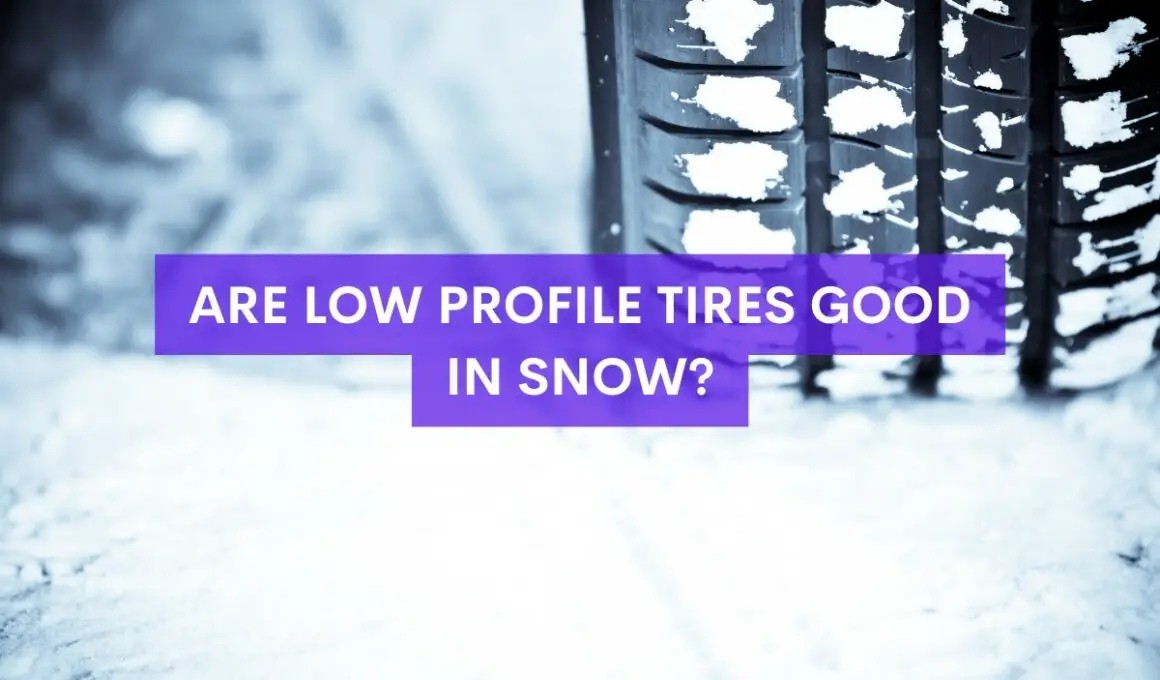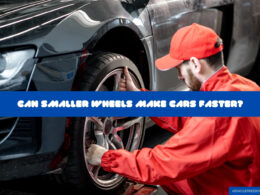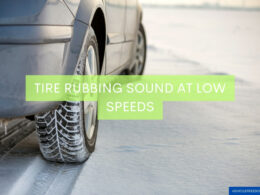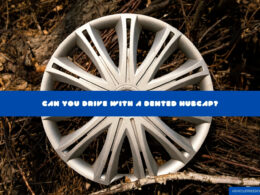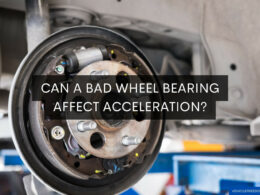In This Article Show
When it comes to tires, one could say I’ve seen them all. With over 13 years of hands-on experience as a mechanic, I’ve dealt with everything from punctures to full-on blowouts. Over the years, I’ve also transitioned into sharing my knowledge through writing, helping car enthusiasts and everyday drivers make informed decisions. One of the hot topics that always seems to find its way into my workshop discussions is the performance of low profile tires, especially in challenging conditions like snow.
Low-profile tires have grown in popularity, mainly due to their sleek appearance and promise of improved handling. But how do they fare when the white stuff blankets the roads? It’s a question I’ve been asked more times than I can count, and today, we’re diving deep into the snowy realm of low-profile tires.
For those who’ve been with cars for a while, the science behind tires and their performance can be pretty straightforward. But for many others, it’s a vast and sometimes confusing world.
Either way, let’s embark on this journey together. Whether you’re a seasoned driver or someone just starting out, my aim is to shed light on this topic in a way that’s simple, conversational, and most importantly, based on my 13 years of experience in the field.
What are Low Profile Tires?
You’ve probably seen them on sports cars, luxury sedans, or even some of the more contemporary SUVs – those sleek, thin tires that seem to hug the wheel a bit tighter than the ones on your everyday sedan. Those, dear reader, are what we call low profile tires.
In the simplest terms, a tire’s ‘profile’ refers to the height of its sidewall – that’s the area between the wheel and the tread. So, when we say “low profile,” we’re talking about tires that have a shorter sidewall relative to their width. To give you a clearer picture, tires are often labeled with numbers like 225/45R17. Here, ’45’ indicates the tire’s aspect ratio, essentially the sidewall’s height as a percentage of the tire’s width. A lower aspect ratio means a lower profile.
But why are they so popular? Aside from the undeniable aesthetic appeal (they give a car a sportier, more aggressive stance), low profile tires promise better handling and responsiveness. Because of the shorter sidewall, these tires tend to flex less, offering drivers a sharper response during turns and at high speeds.
However, as with everything in the automotive world (and life), there are trade-offs. Low profile tires might not cushion road bumps as well as their high-profile counterparts, leading to a stiffer ride. And when it comes to snow, that’s where the debate heats up. But we’ll get into that shortly.
Having fitted, tested, and discussed tires throughout my 13-year mechanic career, I’ve come to appreciate the nuances of each tire type. Low profiles have their place and shine in certain scenarios. However, it’s essential to understand where their strengths lie and where they might need a bit of assistance. Stick around as we dive deeper into their performance, especially when the roads get frosty.
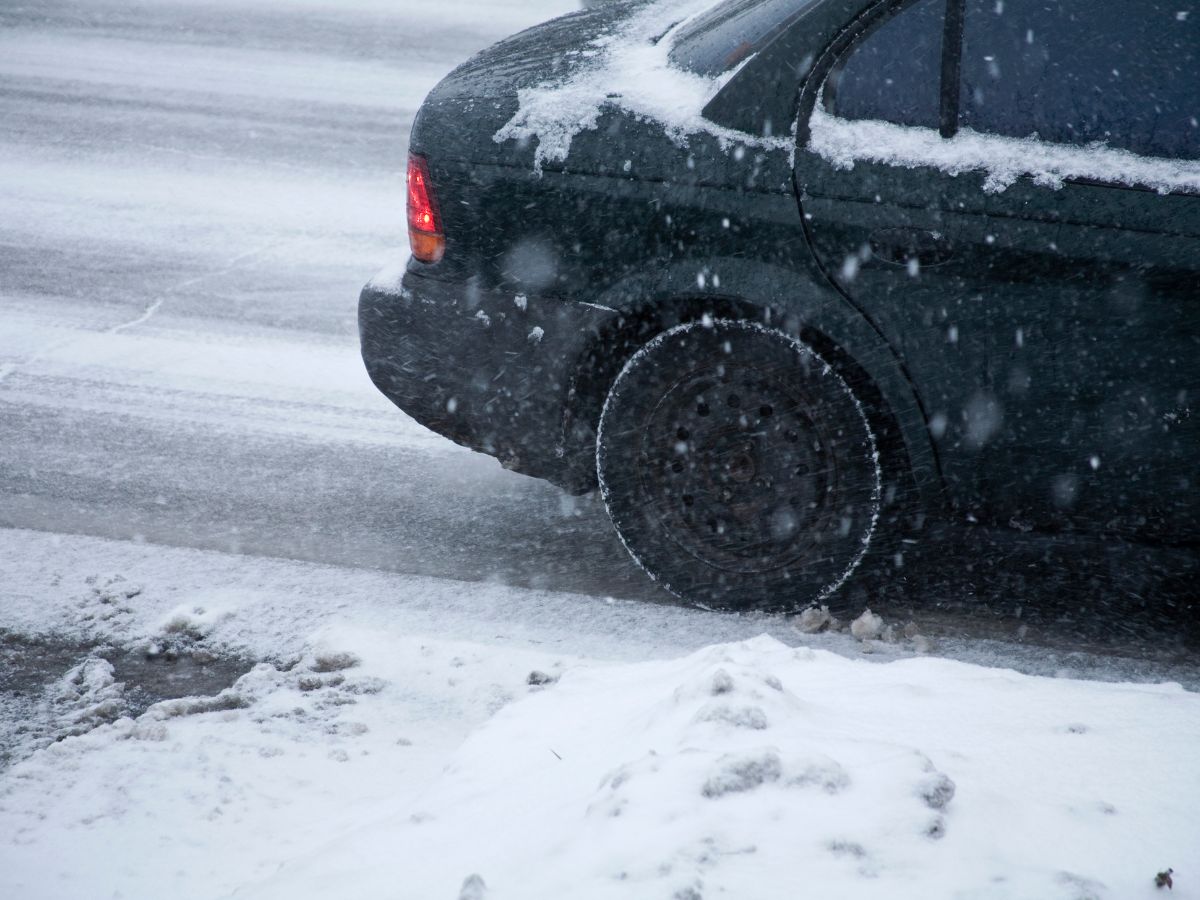
The Science Behind Tires and Snow Grip
Hey, science enthusiasts (and even those who might’ve dozed off a bit in their school science classes)! Whether you’re into the nitty-gritty details of physics or just curious about why some tires seem to have superhero-like grip in snow while others struggle, this section’s for you.
Tire Tread Depth and Patterns
At the heart of a tire’s snow performance is its tread. Picture the grooves and patterns on the tire’s surface. The depth and design of these treads play a crucial role in navigating snowy terrains. Deeper treads help in biting into the snow, creating a firmer grip. These treads also channel snow, slush, and water away from the tire, reducing the risk of hydroplaning.
Wider Profiles and Snow Performance
Here’s where things get a tad more intricate. Wider tires, which are often associated with low-profile designs, have a more extensive contact patch (the area of the tire that touches the road). In dry conditions, this can be beneficial for traction. But in snow? A larger contact patch can sometimes float on top of the snow rather than digging in, leading to reduced grip.
Rubber Compounds and Cold Temperatures
The material a tire is made of isn’t just any ordinary rubber. Tires have specific rubber compounds formulated to perform under various conditions. Some tires are made with compounds that remain pliable and grippy in colder temperatures, essential for snowy conditions. On the other hand, tires not designed for cold climates might harden, reducing their grip on icy or snowy roads.
In essence 🛞
While a tire’s aesthetic and handling properties are important, when it comes to snowy conditions, the tire’s tread design and rubber compound take center stage. So, the next time you admire those beautiful tire patterns, remember they’re not just for show; they’re a perfect blend of science and engineering, ensuring you remain safe and in control on the road.
Challenges Faced by Low Profile Tires in Snow
Now that we’ve delved into the scientific backdrop, let’s address the elephant in the room. Just how do those sleek, low-profile tires fare when faced with the icy and snowy challenges of winter?
1. Reduced Sidewall Flexibility
One of the primary characteristics of low profile tires is their reduced sidewall height. While this provides sharper handling and a more direct steering response, it has a flip side. The limited sidewall doesn’t flex as much, meaning it can’t cushion and mold to snowy or uneven surfaces as effectively as higher-profile tires can. This often results in a less effective snow grip.
2. Larger Tread Gaps and Snow Accumulation
Remember those cool, aggressive tread patterns on many low profile tires? While they look great and offer excellent grip on dry and even wet roads, they can be a bit of a double-edged sword in snow.
Larger tread gaps can lead to snow accumulating within the tread. When snow packs into these gaps, it can create a smooth surface, reducing traction. Think of it like trying to walk on ice with smooth-soled shoes.
3. Harder Rubber Compounds
While not exclusive to low profile tires, many of them, especially those designed for performance in warmer conditions, use harder rubber compounds. As we mentioned earlier, these harder compounds can become less pliable when temperatures drop, diminishing the tire’s ability to grip the road.
It’s worth noting that not all low-profile tires will face these challenges to the same degree. Some manufacturers have recognized the demand for sporty-looking tires that can also handle colder conditions, leading to innovations in design and materials.
However, as a general rule of thumb, traditional low-profile tires were designed with performance, aesthetics, and warm weather in mind, and snow was often a secondary consideration.
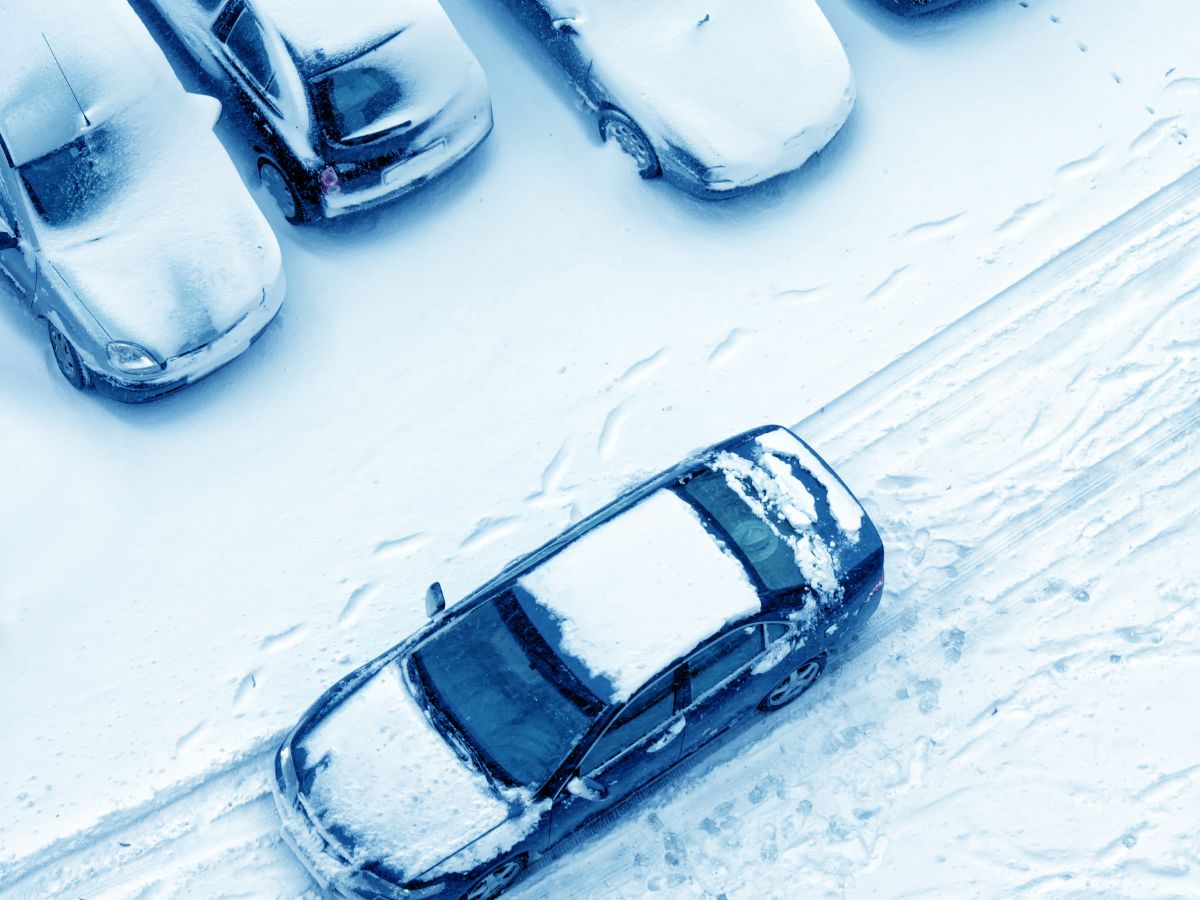
Benefits of Low Profile Tires in Snow
It’s not all chilly news when it comes to low-profile tires in winter conditions. While there are undeniable challenges, there are also a few areas where these stylish tires might surprise you. Here are some of the potential benefits of using low-profile tires during snowy months:
1. Better Handling and Responsiveness on Cleared Roads
When roads are plowed and relatively clear of snow, low profile tires can shine. Their inherent design provides drivers with enhanced feedback and more precise steering responsiveness. So, on those winter days when the highways are clear but still a bit wet, you might appreciate the tighter handling of your low profile tires.
2. Reduced Rolling Resistance
Low profile tires, due to their design and materials, often provide reduced rolling resistance. In layman’s terms, they can make your vehicle slightly more fuel-efficient. While this isn’t directly tied to snowy conditions, it’s a benefit that can come into play during colder months when engines work harder and fuel economy might take a hit.
3. Aesthetic Appeal Even in Winter Months
Let’s face it, part of the allure of low profile tires is their sleek, sporty look. Even in winter, driving a car that looks good can give many car enthusiasts a sense of pride. This might not be a performance benefit, but it’s a perk that many drivers appreciate, snow or shine.
4. Optimal Performance in Mixed Conditions
In regions where winter brings a mix of rain, sleet, and occasional snow, low profile tires can offer a middle ground. They handle wet roads well, and when there’s a light dusting of snow or it’s rapidly melting, these tires might strike a balance between performance and appearance.
To wrap it up, while low profile tires might not be the first choice for heavy snowfall areas or treacherous winter conditions, they aren’t entirely out of their depth in milder or mixed scenarios. Just like any other equipment, knowing their strengths and limitations is key to maximizing their benefits and ensuring safety on the road.
Comparing Low Profile Tires to Winter/Snow Tires
Venturing into the world of tires, one might wonder, “If low profile tires have benefits in snow, why even consider winter tires?” Well, the distinction becomes clearer when you directly compare the two. Let’s dive in and unravel the specifics of each tire type in the context of winter driving:
1. Design and Purpose
- Low Profile Tires: Typically, these are designed with performance and aesthetics in mind. They excel in offering enhanced steering responsiveness, handling, and a sportier appearance. Their primary domain is dry and wet roads, not necessarily snowy terrains.
- Winter/Snow Tires: Crafted specifically for cold climates, winter tires prioritize safety and performance in snow and ice. They are equipped with deeper treads, unique patterns, and specialized rubber compounds to handle winter’s challenges.
2. Tread Depth and Patterns
- Low Profile Tires: Often have wider tread gaps suitable for channeling water, but these might not be as efficient in preventing snow from accumulating.
- Winter/Snow Tires: Feature more aggressive tread patterns and deeper grooves. These designs bite into snow and ice, ensuring a better grip. They also help channel slush away and reduce the risk of hydroplaning on wet winter roads.
3. Rubber Compound
- Low Profile Tires: May use harder rubber compounds, which can become stiff in cold temperatures, potentially reducing grip.
- Winter/Snow Tires: Utilize softer rubber compounds designed to remain flexible in freezing temperatures, ensuring consistent traction even when the mercury drops.
4. Temperature Performance
- Low Profile Tires: Optimized for warmer conditions, they might start to lose their efficacy when temperatures plummet.
- Winter/Snow Tires: Even without snow, winter tires excel in colder temperatures, providing better grip and safety on cold, dry asphalt.
Conclusion 🚓
While low-profile tires offer a blend of performance and style, and can manage in milder winter conditions, snow/winter tires are the undisputed champions for winter driving safety. Think of it as using specialized equipment; just as you’d wear snow boots instead of sneakers in a blizzard, winter tires are the go-to choice for optimal grip and safety in harsh winter conditions.
Tips for Using Low-Profile Tires in Winter
If you’re set on using or currently have low profile tires fitted on your vehicle during the winter months, maximizing their performance and ensuring safety on the roads is essential. Here are some tips to help you navigate the frosty terrain with these sleek tires:
1. Regularly Check Tire Pressure
Cold weather can cause tire pressure to drop. Ensure you check your tire pressure frequently and keep it at the recommended levels. Proper inflation can improve traction and prevent unwanted wear.
2. Inspect Tread Depth
For optimal grip, ensure your tire treads are in good condition. As tires wear down, their ability to channel snow and slush diminishes, leading to reduced traction. Consider replacing tires that are showing significant wear.
3. Avoid Sudden Movements
Due to their design, low profile tires might not grip as well in snowy conditions. It’s wise to avoid sudden braking, sharp turns, or rapid accelerations, which could lead to skidding.
4. Increase Following Distance
Give yourself more room to stop, especially when driving behind other vehicles. This will provide you with a safety buffer in case your tires don’t grip as efficiently as expected.
5. Be Cautious of Black Ice
This thin layer of ice can be especially treacherous for all tire types, including low profile ones. It’s nearly invisible on the road, so always be cautious when temperatures are near or below freezing, especially on bridges or shaded areas.
6. Consider Carrying Traction Aids
Having items like sand or kitty litter in your vehicle can be handy. If you get stuck in snow, spreading these materials around your tires can offer the additional traction needed to get moving.
7. Know When to Switch
If you live in an area with harsh winters and frequent snowfall, consider having a set of winter tires on standby. While low-profile tires can manage in milder conditions, there’s no substitute for the security provided by dedicated winter tires in extreme conditions.
8. Stay Updated on Weather Forecasts
Before heading out, always check the weather forecast. If heavy snow or a drop in temperatures is predicted, plan your journey accordingly, or if possible, delay travel until conditions improve.
In Conclusion
Using low profile tires in winter requires a bit of extra vigilance and care. While they have their benefits, it’s crucial to be aware of their limitations and adapt your driving habits accordingly. Safe travels, and may your winter journeys be smooth and trouble-free!






